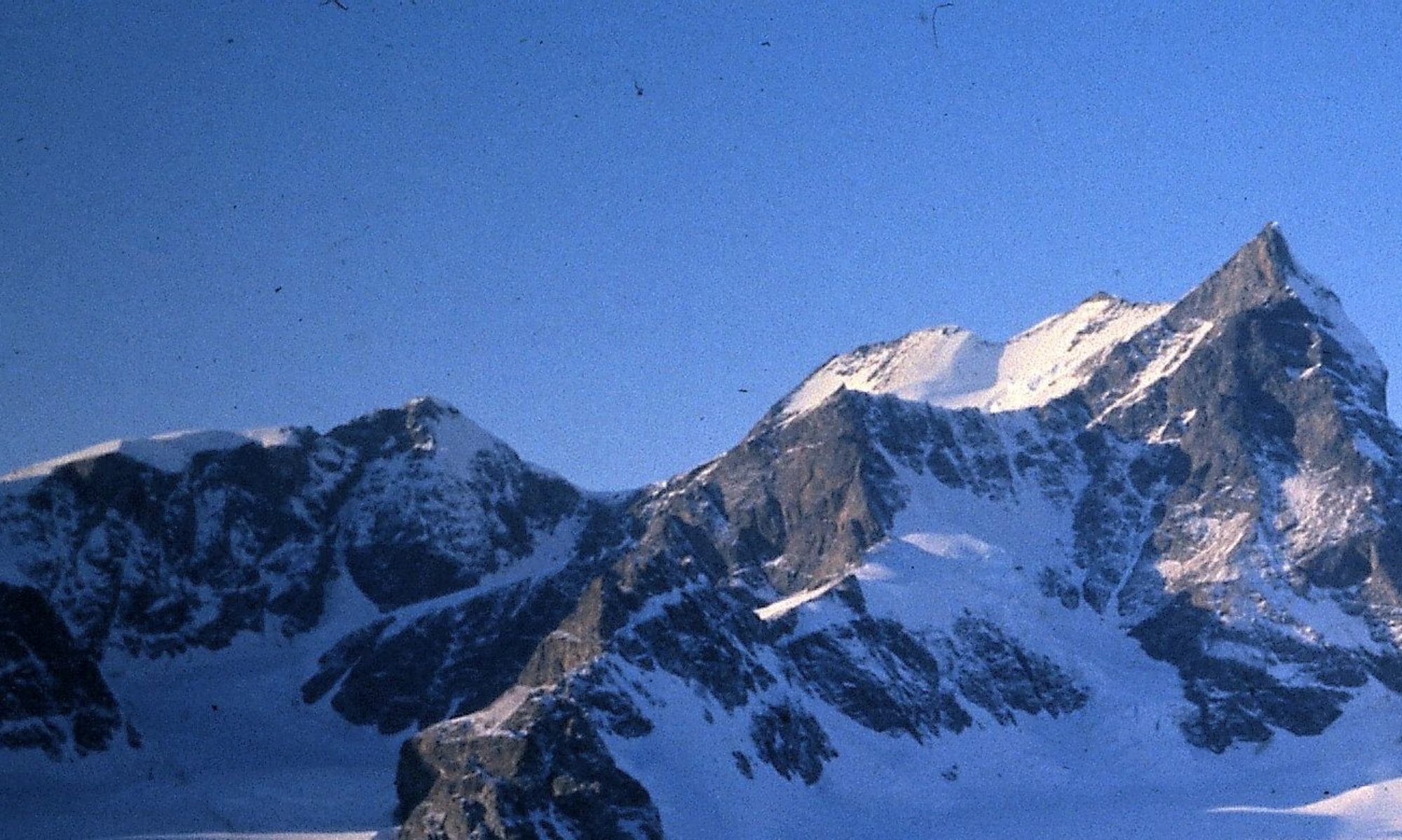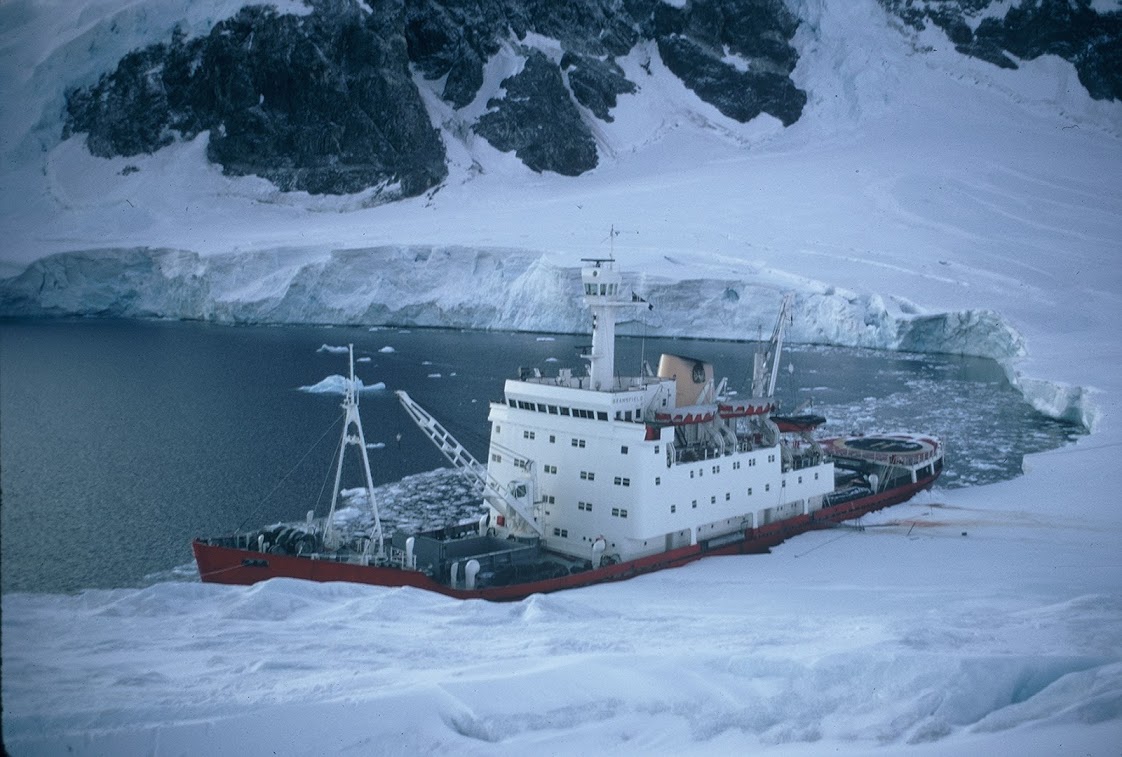Header Photo: RRS Bransfield at the Jones Ice Shelf to unload stores, personnel and dog teams, 1971 (Photo: Steve Wormald)
Stories of the BAS Ships – Their Histories, Masters, Crews, and Voyages
We hope to tell the many stories here, of the BAS Ships – From Trepassey during Fids, to the Shackleton, Protector, the John Biscoes, Endurance, Bransfield, James Clark Ross and onwards. But first, a word about navigating in the ice of the Polar Seas….
Ice Navigation and Exploring the Southern Polar Seas – Stuart Lawrence
(First Published in The Institute of Seamanship Journal, Volume Fifteen, Number One, June 2020)
The frozen seas have given problems to navigators since antiquity with one of the earliest records being that of Pytheas of Massalia in 350-300 BC
Better known will be the voyages, between 1772 and 75, of James Cook RN who in HMS Resolution obtained a latitude of 71 10S, about 200km from the Continent of Antarctica, and who wrote on turning back north “I who had ambition not only to go further south than anyone had done before, but as far as it is possible for man to go, was not sorry at meeting with this interruption (consolidated pack ice) as it in some measure relieves us, at least shortened the danger and hardships inseparable with navigation in the Southern Polar Regions. Since, therefore, as we could not proceed not one inch further to the south, no other reason need be assigned for my tacking and standing north”.
This year is the 200th anniversary of the sighting of the Continent in 1820 by William Smith and Edward Bransfield RN in the brig Williams for we British; Nathaniel Palmer, in the sealer Hero, for the Americans, and Thaddeus Bellingshausen, in the Vostok, for the Russians.
Read On…. or
Captain Tom Woodfield’s Last Voyage
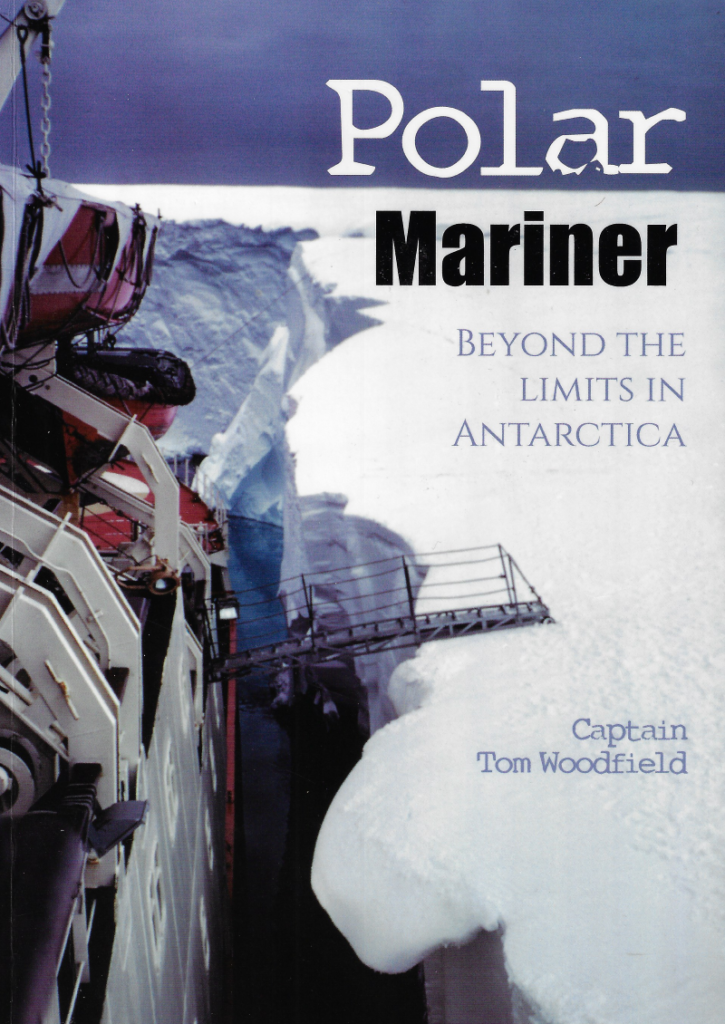
Most of you will already know from the BASC of the passing of Captain Tom Woodfield on Saturday, September 30th, 2023. Tom gave his written permission to use any excerpts from his book ‘Polar Mariner’ on the Marguerite Bay website.
Many Fids will have read the book, but re-publishing his chapter titled “The Grand Finale” seemed like a fitting tribute.
Most Fids who embarked on the Shackleton, John Biscoe or Bransfield will ‘feel’ his description of his final crossing of the Drake Passage, perhaps all too vividly:
“The season was over, done and dusted — or so we thought — as we left the fast-cooling, pristine southern continent, with its lessening hours of daylight, for warmer climes, but initially duller ones, until we could also leave the Falklands astern and head for the tropics and home.”
MV Penola
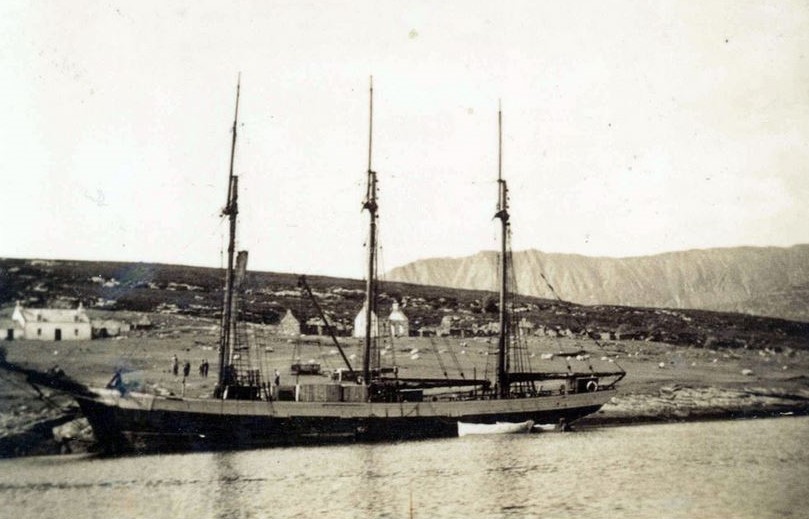
Isle Martin is in Loch Broom near Ullapool in Scotland. Penola was a sailing schooner with an auxiliary steam engine, used in the British Grahamland Expedition to Grahamland, 1934-1937.
Penola sank in the Clyde in 1940 after a collision
Jonathan Walton, Surveyor, Fossil Bluff – 1974 and 1975 (and son of Kevin Walton, Stonington – 1946 and 1947)
MV Trepassey
During Operation Tabarin, 1943-1945, ship support was provided by the Admiralty, consisting of an ice-strengthened Royal Navy-commandeered vessel, a local Falkland Islands supply ship, and MV Trepassey, an ice-strengthened ship chartered from St. John’s, Newfoundland.
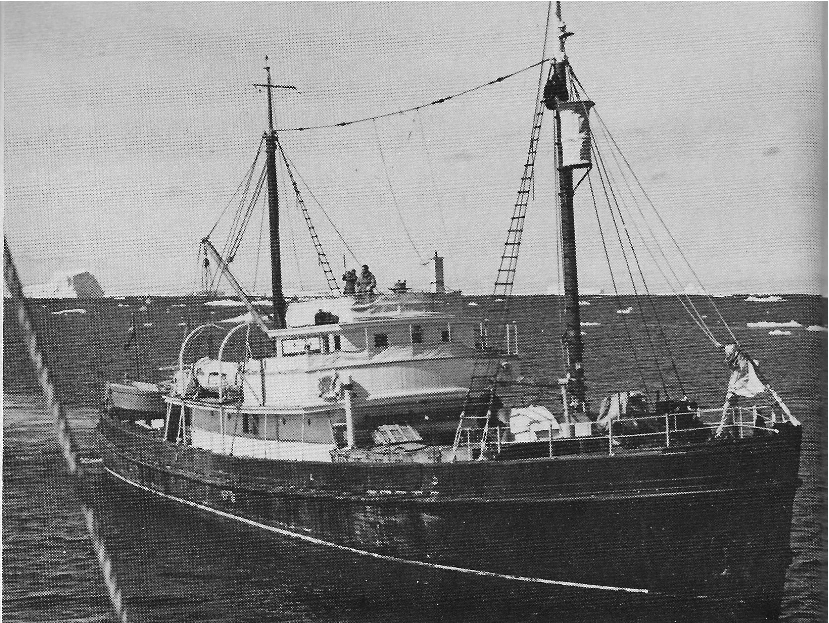
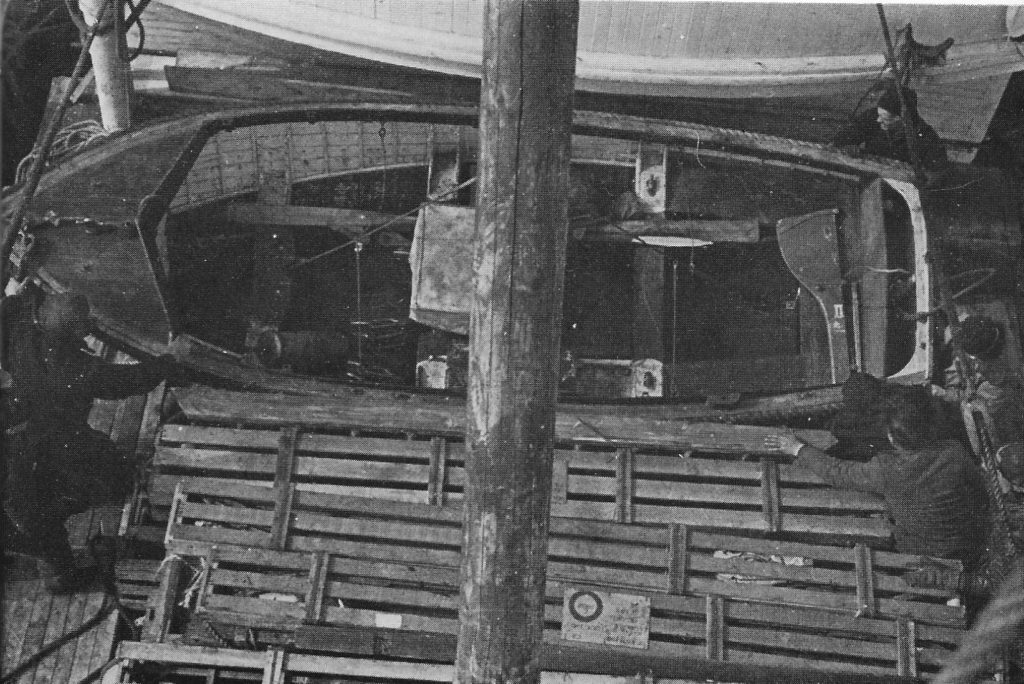
RRS John Biscoe 1
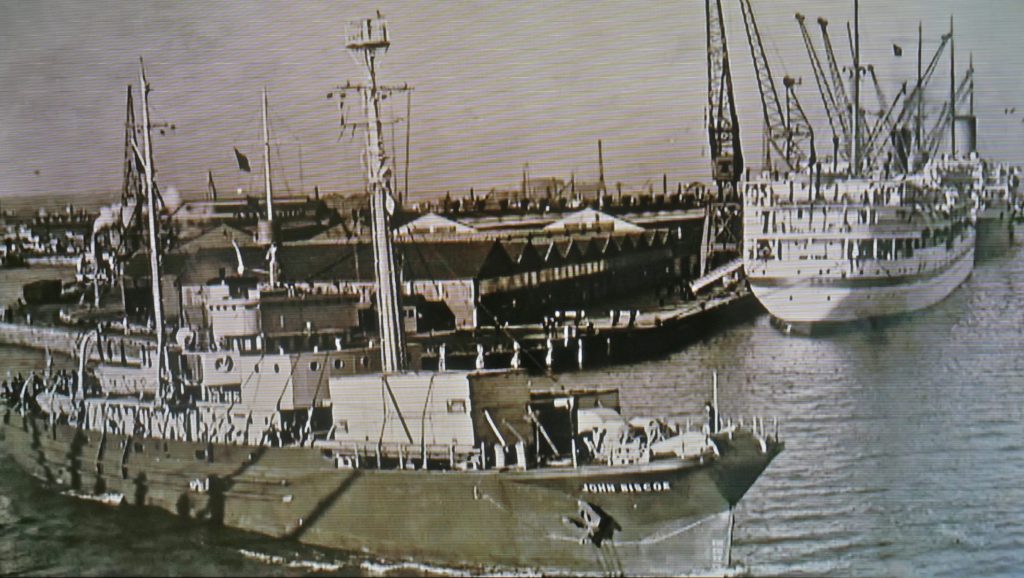
In 1947, FIDS purchased its first vessel, MV Pretext and re-named it the MV John Biscoe, after the English 19th-century sea captain, John Biscoe (1794-1843). (In 1830, Biscoe was given command of the Tula by Enderby Brothers of London. Combining exploration with the search for new sealing grounds, Biscoe circumnavigated the Antarctic continent, discovering Enderby Land in 1831, Adelaide Island and the Biscoe Islands in 1832, as well as part of the west coast of the Antarctic Peninsula, naming it Graham’s Land (now Graham Coast).
MV John Biscoe was used by FIDS as a supply vessel to re-stock bases and exchange personnel. She was a wooden motor vessel of 870 tons gross (416 tons net), ice-strengthened, with diesel electric engines. Maximum speed of 12 knots. Classed as A1 survey vessel. Complement 30 crew, 12 passengers. Greenheart sheathing fitted to hull 1948-9.
In 1953, the John Biscoe was awarded the status of RRS (Royal Research Ship). On arriving back in Southampton on 12 Jun 1956, she was replaced with a new purpose-built vessel, also named the John Biscoe. To avoid confusion with the new ship, the original Biscoe was renamed Pretext from 24 April 1956.
HMS Protector (A-146 – “The Grey Ghost”)
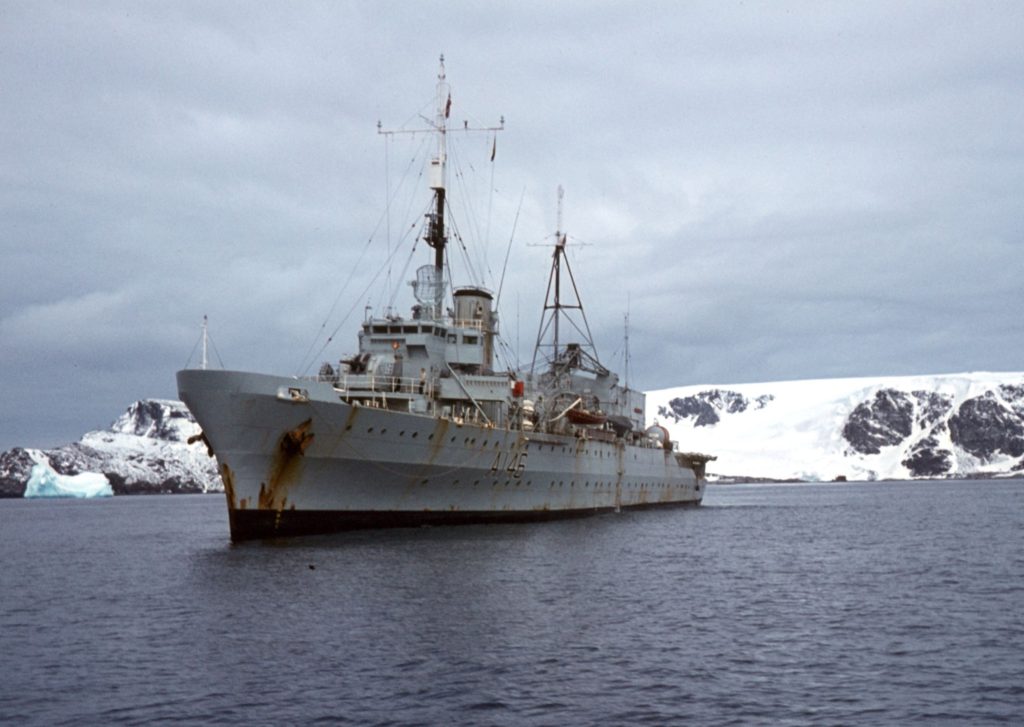
Read all about Protector here…
RRS Shackleton
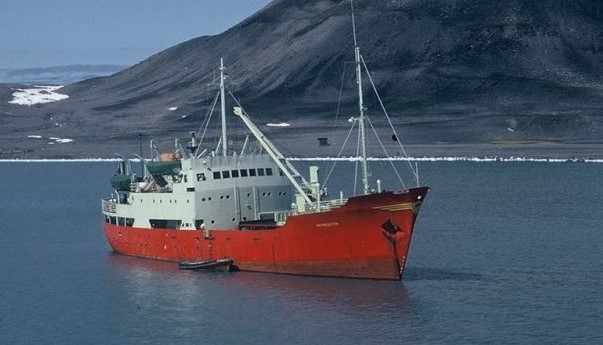
In 1955 a second ship was bought – ‘RRS Shackleton‘, and the next year the first purpose-built support vessel, ‘RRS John Biscoe‘ replaced her ageing namesake.
Stories are told by Captain Tom Woodfield, Peter Kennet and Ian ‘Curf” Curphey
RRS John Biscoe II
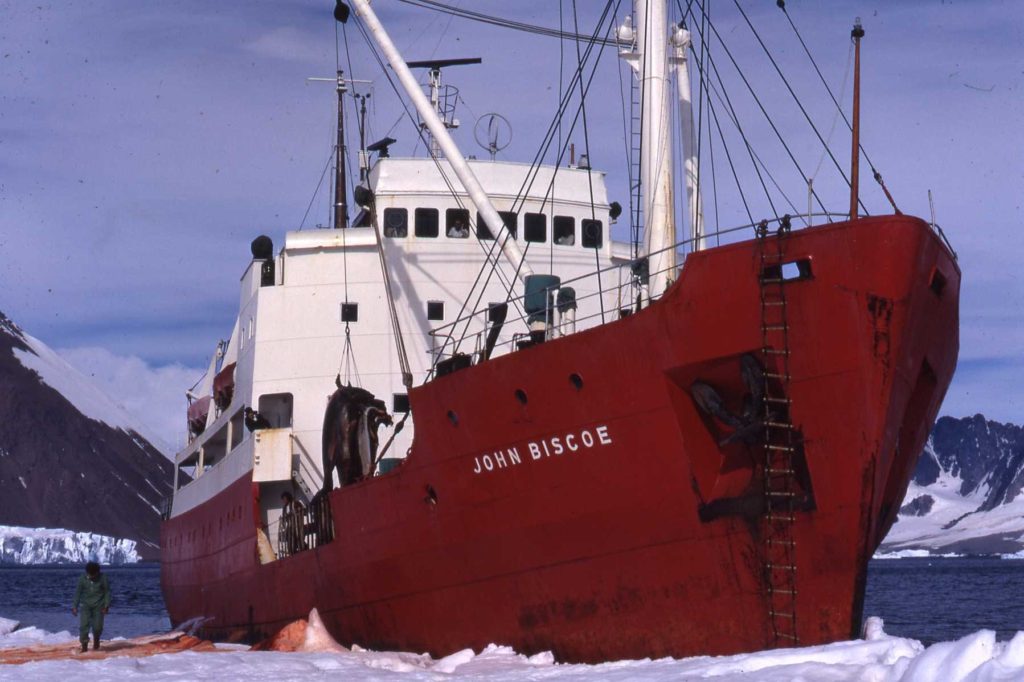
The second John Biscoe was built by Fleming and Ferguson Ltd, Paisley, for the Falkland Island Dependencies Survey. Launched in 1956, initially the ship was a cargo vessel to resupply FIDS – later BAS – research stations. Increasingly she supported hydrographic and marine biology surveys, and geological landings.
Following a major refit in 1979, her role became that of a platform for marine science, particularly the Offshore Biology Programme. Modifications included replacement of the main engines, new laboratories, winches for sampling down to 3000 metres, a gantry for trawling and bow thruster to enable the ship to maintain station in strong winds and currents. New instrumentation included a satellite navigation system, echo-sounder and echo-integrator and salinity-temperature-depth profiler.
During the 1985/86 season, Biscoe became trapped in sea ice near Wiencke Island (see below). Crew were temporarily evacuated to the RV Polar Duke and Palmer station from 18-20 Nov 1985, when she was finally freed from the ice by the West German vessel, Polarstern.
Her final voyage with BAS took place during the 1990/91, returning to Grimsby on 10 May 1991
Jonathan Walton tells one story of the ‘Biscoe’ – there are many more out there….
RRS Bransfield
RRS Bransfield was the second vessel to be named after Bransfield by BAS or its predecessors. The first HMS Bransfield was the original expedition ship for Operation Tabarin (see Stonington pages). That vessel was a wooden Norwegian sealer built in 1918 as the Veslekari, and renamed for the expedition. Her service with Tabarin was inglorious – she proved to be unseaworthy, and had to be replaced before the expedition left English waters in November 1943.
Bransfield (“Branny”) was launched in September 1970, designed by consultants Graham & Woolnaugh of Liverpool for NERC, and built by Robb Caledon Shipbuilders Ltd, Leith.
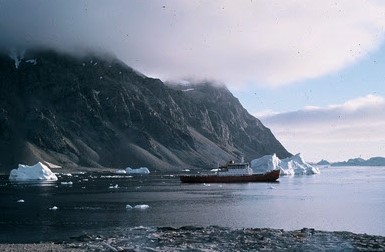
The Bransfield was BAS’s main supply vessel from 1970/71-1998/99, and also had limited facilities for on-board research. Following the ship’s return to the UK in May 1999, she was sold to Rieber Shipping A/S as part of the contract for the long-term charter of her replacement RRS Ernest Shackleton, and subsequently broken-up after passage to India.
Many stories surround the Branny’s service to Fids – Jack Tolson tells of his first voyage on the Bransfield….
HMS Endurance (A171 – 1967-1991)
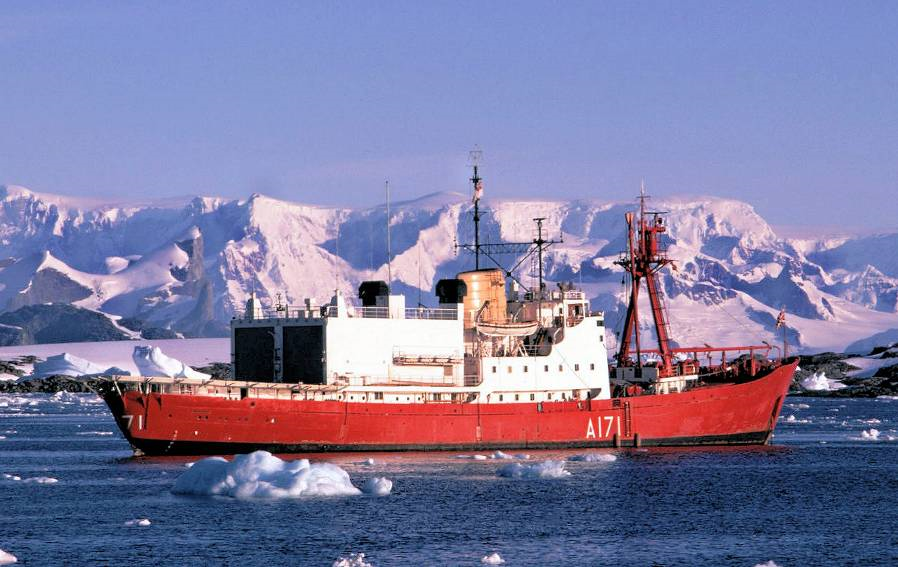
Christmas with the Endurance, 1968 – Ali Skinner
We arrived on ‘John Biscoe’ into Potters Cove, King George Island just on Midday, ‘Shackleton’ and
‘Endurance’ already there all three anchoring up for Christmas Day.
HMS Endurance (A171 – 1991-2008)
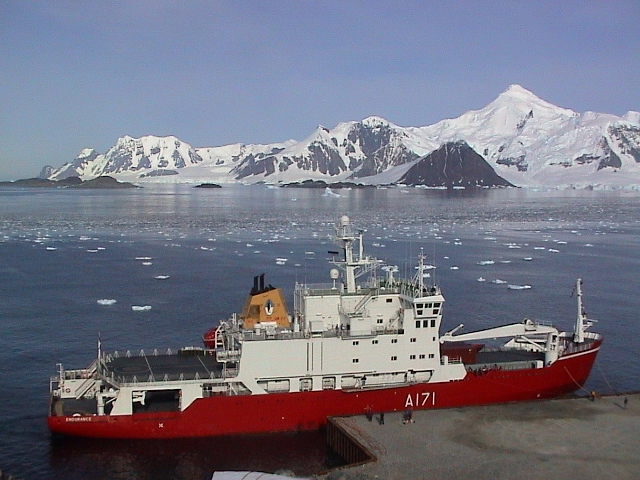
(Photo: Jenny Dean)
RRS James Clark Ross (JCR)
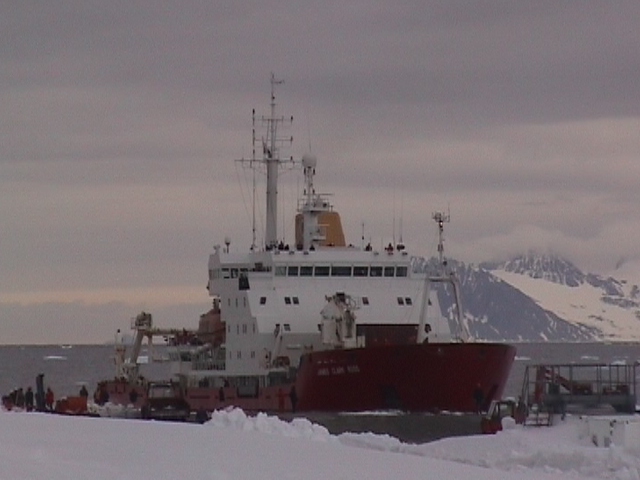
RRS Ernest Shackleton
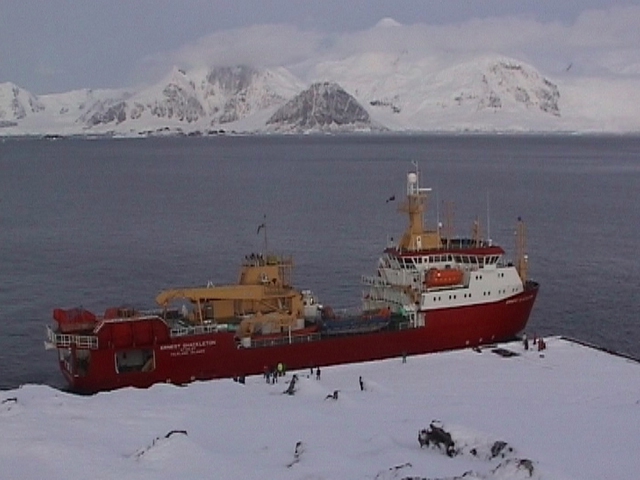
HMS Protector (A173)

Honorary Ship – RV Hero
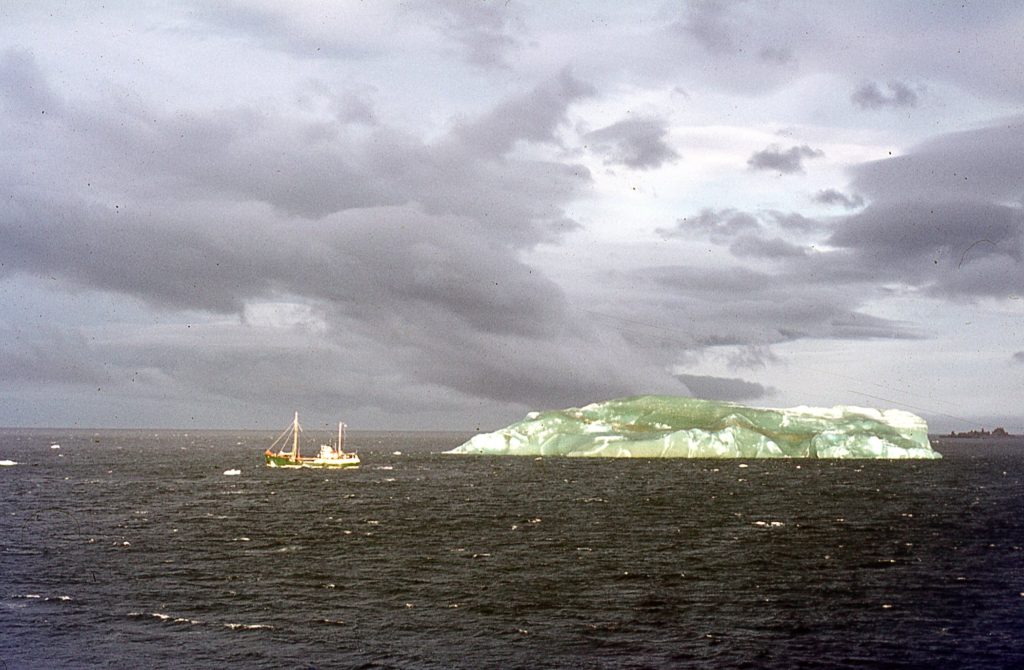

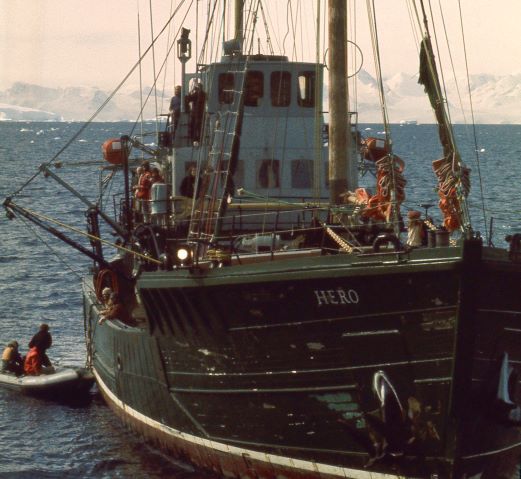
A simple way to get to Stonington – Sandy Muir
December 1963! This is the tale of two medical officers’ trip to Marguerite Bay. Mike Rice was going to Adelaide base and I was to go to Stonington. We had been delayed by our research preparations in the MRC unit and were therefore to ship south in a somewhat complicated way. The plan was for us to sail south on a chartered Danish ship, the Kista Dan, which was doing the trip to Halley Bay. We were to meet up with the John Biscoe in South Georgia which was scheduled to relieve Adelaide and Stonington. It did not go quite to plan.
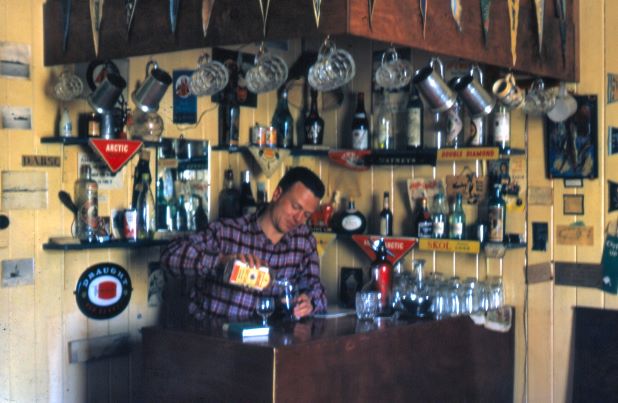
Mike and I were just settling in and meeting up with the Fidlets going to Halley Bay when we added another late-comer to our trip. It was Garrick Grikurov a Russian Geologist who was going to see how our geologists worked and had been assigned to Stonington. Russian!! This was 1963 and joint working with the Soviets just did not happen! However Garrick was a great chap to have around and he had a great sense of humour and provided us with a valuable insight of life in the USSR.
